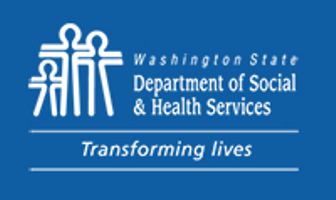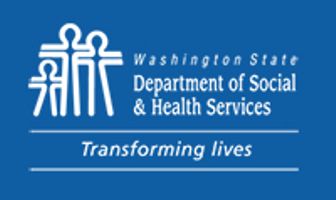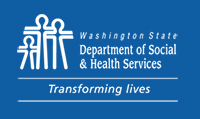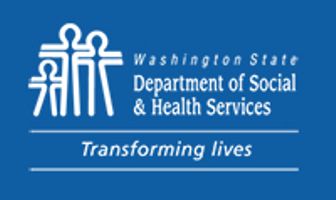Title Page
-
Conducted on
-
Prepared by
-
Location
-
Detailed Location
- GPU Common areas
- ***AT Bldg/TX Mall***
- GPU Food Service West Lake / Pod H
- 3N1 APU
- GPU Pod HMH
- HR / IT / Safety Offices / Rehab Offices /
- 1S1 FSU
- GPU Pod B
- Food Service East Lake-both levels
- 1N1 APU
- Security / PERT /Social Work / FSU Psychology Area / Med Staff Office
- GPU Pod D
- 2N1 APU
- FSU/APU/AT Bldg Yard Spaces/Sidewalks
- 2S1 FSU
- Educational Services
- GPU Pod E
- Dental Office 0N3 / Psychology Area
- 2N3 FSU
- GPU Lab
- Medical Records / SB / Accounting-includes patient funds /Admin / CNO /
- Pharmacy
- GPU OT and Rehab Areas
- ETRU
- 3S1 FSU
- 0N3 Offices / Central Supply / Housekeeping / Basement Corridor / QM
- ***1N3***New ward scheduled to open 1 Jul 20
- ***3N3***New ward scheduled to open 1 Jul 20
Security EOC Checklist
-
SM 1. All employees wear identification badges in plain view?
-
What is the likelihood to harm a patient / staff / Visitor?
- High: Could directly lead to harm without need for other significant circumstances or failures.--Likely
- Moderate: Could cause harm directly, but more likely to cause harm as a contributing factor in the presence of special circumstances or additional failures.--Possible
- Low: Undermines safety/quality or contributes to an unsafe environment, but very unlikely to directly contribute to harm.--Rare
-
Is the problem…
- Widespread: issue is “pervasive at the organization” --Process failure/systemic failure --Majority of patients are/could be impacted
- Pattern: issue has potential to “impact more than a limited number of patients impacted” -- Process variation -- > or = 3 but less than 50% patients impacted
- Limited: issue is a “unique occurrence” -- Outlier -- Not representative of routine/regular practice
-
SM 2. All contractors and vendors wear identification badges in plain view
-
What is the likelihood to harm a patient / staff / Visitor?
- High: Could directly lead to harm without need for other significant circumstances or failures.--Likely
- Moderate: Could cause harm directly, but more likely to cause harm as a contributing factor in the presence of special circumstances or additional failures.--Possible
- Low: Undermines safety/quality or contributes to an unsafe environment, but very unlikely to directly contribute to harm.--Rare
-
Is the problem…
- Widespread: issue is “pervasive at the organization” --Process failure/systemic failure --Majority of patients are/could be impacted
- Pattern: issue has potential to “impact more than a limited number of patients impacted” -- Process variation -- > or = 3 but less than 50% patients impacted
- Limited: issue is a “unique occurrence” -- Outlier -- Not representative of routine/regular practice
-
SM 3. Does staff know to announce a security emergency/incident? (Code Gray) over channel1via radio or call ext. 4333.
-
What is the likelihood to harm a patient / staff / Visitor?
- High: Could directly lead to harm without need for other significant circumstances or failures.--Likely
- Moderate: Could cause harm directly, but more likely to cause harm as a contributing factor in the presence of special circumstances or additional failures.--Possible
- Low: Undermines safety/quality or contributes to an unsafe environment, but very unlikely to directly contribute to harm.--Rare
-
Is the problem…
- Widespread: issue is “pervasive at the organization” --Process failure/systemic failure --Majority of patients are/could be impacted
- Pattern: issue has potential to “impact more than a limited number of patients impacted” -- Process variation -- > or = 3 but less than 50% patients impacted
- Limited: issue is a “unique occurrence” -- Outlier -- Not representative of routine/regular practice
-
SM 4. In FSU with magnetic locks, staff is familiar with alternative security measures in the eventof magnetic lock failure (e.g. fire alarm, loss of power, equipment failure)? Use of Mogul Key.
-
What is the likelihood to harm a patient / staff / Visitor?
- High: Could directly lead to harm without need for other significant circumstances or failures.--Likely
- Moderate: Could cause harm directly, but more likely to cause harm as a contributing factor in the presence of special circumstances or additional failures.--Possible
- Low: Undermines safety/quality or contributes to an unsafe environment, but very unlikely to directly contribute to harm.--Rare
-
Is the problem…
- Widespread: issue is “pervasive at the organization” --Process failure/systemic failure --Majority of patients are/could be impacted
- Pattern: issue has potential to “impact more than a limited number of patients impacted” -- Process variation -- > or = 3 but less than 50% patients impacted
- Limited: issue is a “unique occurrence” -- Outlier -- Not representative of routine/regular practice
-
SM 5. Access controls function properly (e.g. badge readers, key-pads, mechanical locks, etc.)?
-
What is the likelihood to harm a patient / staff / Visitor?
- High: Could directly lead to harm without need for other significant circumstances or failures.--Likely
- Moderate: Could cause harm directly, but more likely to cause harm as a contributing factor in the presence of special circumstances or additional failures.--Possible
- Low: Undermines safety/quality or contributes to an unsafe environment, but very unlikely to directly contribute to harm.--Rare
-
Is the problem…
- Widespread: issue is “pervasive at the organization” --Process failure/systemic failure --Majority of patients are/could be impacted
- Pattern: issue has potential to “impact more than a limited number of patients impacted” -- Process variation -- > or = 3 but less than 50% patients impacted
- Limited: issue is a “unique occurrence” -- Outlier -- Not representative of routine/regular practice
-
SM 6. Mechanical and electrical spaces are secured except to essential personnel?
-
What is the likelihood to harm a patient / staff / Visitor?
- High: Could directly lead to harm without need for other significant circumstances or failures.--Likely
- Moderate: Could cause harm directly, but more likely to cause harm as a contributing factor in the presence of special circumstances or additional failures.--Possible
- Low: Undermines safety/quality or contributes to an unsafe environment, but very unlikely to directly contribute to harm.--Rare
-
Is the problem…
- Widespread: issue is “pervasive at the organization” --Process failure/systemic failure --Majority of patients are/could be impacted
- Pattern: issue has potential to “impact more than a limited number of patients impacted” -- Process variation -- > or = 3 but less than 50% patients impacted
- Limited: issue is a “unique occurrence” -- Outlier -- Not representative of routine/regular practice
-
SM 7. Exterior windows in patient care areas are secured shut with tamper-resistant fasteners?
-
What is the likelihood to harm a patient / staff / Visitor?
- High: Could directly lead to harm without need for other significant circumstances or failures.--Likely
- Moderate: Could cause harm directly, but more likely to cause harm as a contributing factor in the presence of special circumstances or additional failures.--Possible
- Low: Undermines safety/quality or contributes to an unsafe environment, but very unlikely to directly contribute to harm.--Rare
-
Is the problem…
- Widespread: issue is “pervasive at the organization” --Process failure/systemic failure --Majority of patients are/could be impacted
- Pattern: issue has potential to “impact more than a limited number of patients impacted” -- Process variation -- > or = 3 but less than 50% patients impacted
- Limited: issue is a “unique occurrence” -- Outlier -- Not representative of routine/regular practice
-
SM 8. Surveillance cameras are functional and properly aligned?
-
What is the likelihood to harm a patient / staff / Visitor?
- High: Could directly lead to harm without need for other significant circumstances or failures.--Likely
- Moderate: Could cause harm directly, but more likely to cause harm as a contributing factor in the presence of special circumstances or additional failures.--Possible
- Low: Undermines safety/quality or contributes to an unsafe environment, but very unlikely to directly contribute to harm.--Rare
-
Is the problem…
- Widespread: issue is “pervasive at the organization” --Process failure/systemic failure --Majority of patients are/could be impacted
- Pattern: issue has potential to “impact more than a limited number of patients impacted” -- Process variation -- > or = 3 but less than 50% patients impacted
- Limited: issue is a “unique occurrence” -- Outlier -- Not representative of routine/regular practice
-
SM 9. Surveillance camera multiplexers and monitors are functional and video quality is satisfactory?
-
What is the likelihood to harm a patient / staff / Visitor?
- High: Could directly lead to harm without need for other significant circumstances or failures.--Likely
- Moderate: Could cause harm directly, but more likely to cause harm as a contributing factor in the presence of special circumstances or additional failures.--Possible
- Low: Undermines safety/quality or contributes to an unsafe environment, but very unlikely to directly contribute to harm.--Rare
-
Is the problem…
- Widespread: issue is “pervasive at the organization” --Process failure/systemic failure --Majority of patients are/could be impacted
- Pattern: issue has potential to “impact more than a limited number of patients impacted” -- Process variation -- > or = 3 but less than 50% patients impacted
- Limited: issue is a “unique occurrence” -- Outlier -- Not representative of routine/regular practice
-
SM 10. Panic alarms function properly and staff is aware of their location and use?
-
What is the likelihood to harm a patient / staff / Visitor?
- High: Could directly lead to harm without need for other significant circumstances or failures.--Likely
- Moderate: Could cause harm directly, but more likely to cause harm as a contributing factor in the presence of special circumstances or additional failures.--Possible
- Low: Undermines safety/quality or contributes to an unsafe environment, but very unlikely to directly contribute to harm.--Rare
-
Is the problem…
- Widespread: issue is “pervasive at the organization” --Process failure/systemic failure --Majority of patients are/could be impacted
- Pattern: issue has potential to “impact more than a limited number of patients impacted” -- Process variation -- > or = 3 but less than 50% patients impacted
- Limited: issue is a “unique occurrence” -- Outlier -- Not representative of routine/regular practice
-
SM 11. Do you have any additional comments? If so, please add them here.
-
Add media











